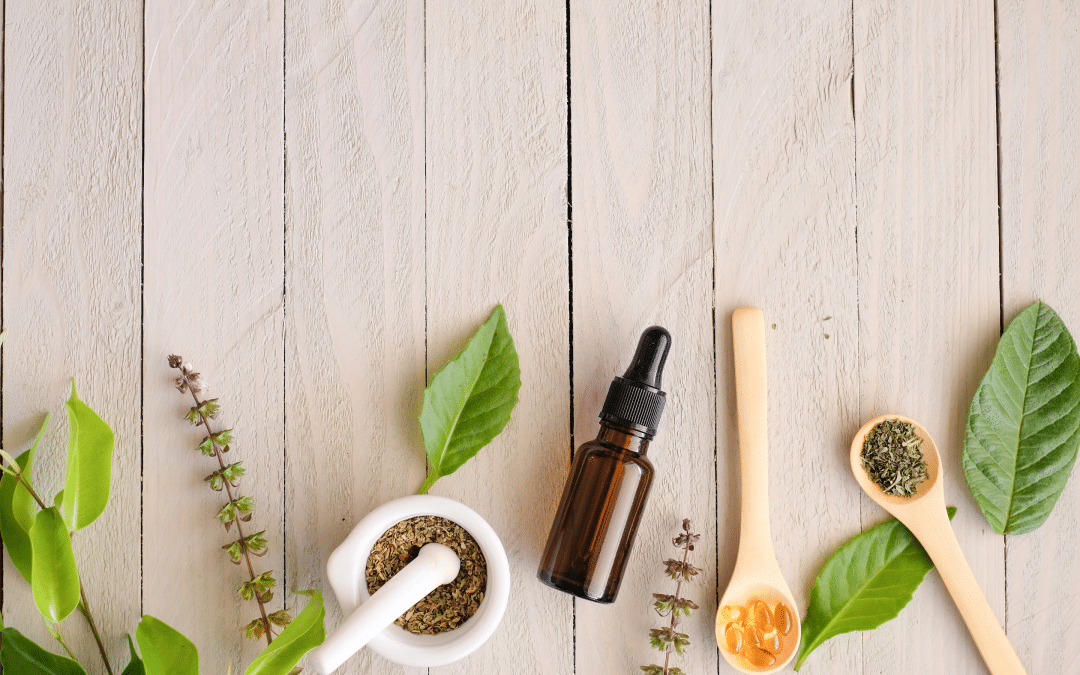You might have heard the advice to eat five servings of fruits and vegetables daily. But what if you went further and prioritized dietary diversity? Focusing on getting 30 plants a week can be a game-changer for your health.
Eating 30 plants a week might seem like a lot, but it can have a surprising impact on your gut. Research suggests that focusing on plant variety is becoming as important as plant volume.
Why Aim for 30 Plants a Week?
The concept of eating 30 different types of plants each week isn’t just a trend. There’s significant scientific evidence to back it up. Eating 30 different types of plant-based food each week, such as in the Mediterranean diet, is linked to a reduced risk of conditions like heart disease and type 2 diabetes.
A diverse plant intake is vital for a healthy gut microbiome. This community of bacteria and other microorganisms in your gut thrives on prebiotics, which come from the foods we eat.
Understanding Prebiotics and Polyphenols
Plants are abundant in prebiotics like different types of fiber, other carbohydrates, and chemicals known as polyphenols. These give many fruits and vegetables their bright coloring and are antioxidant and anti-inflammatory.
Each plant provides different types of prebiotics that feed specific gut bacteria. Therefore, eating a variety of foods lets us nurture a thriving microbiome.
A diverse gut filled with healthy organisms and a resilient microbiome go hand-in-hand. Over time, you may find it leads to a long-term gut-healthy lifestyle.
The Origin of 30 Plants a Week
So, where did the ’30’ in “30 plants a week” actually come from? In 2018, the American Gut Project, involving over 10,000 participants, published information that formed much of our basis for this research. The findings were quite fascinating.
Participants who ate a wider variety of plants had a more diverse set of bacteria, fungi, and other microbes living in their gut. Individuals who ate 30 or more different plants a week demonstrated even higher levels of beneficial gut bacteria than individuals consuming 10 or fewer.
What Really Counts as a Plant?
Getting 30 plants into a week is easier than you might think. Shifting away from a limited view and expanding to include many more food sources as plant-based might be the right strategy.
Think beyond fruits and veggies. Foods you might not regularly count do make it onto our comprehensive plant points.
Expanding Your Plant-Based Food List
Let’s explore different categories that can be added to your weekly checklist.
Vegetables: A Rainbow of Choices
Vegetables offer countless variations in shape, size, and color. Include options like root vegetables, salad greens, cruciferous vegetables, and alliums like red onions and garlic.
Some specific things to consider might be asparagus, broccoli, cabbage, carrots, and even sweet potatoes.
Fruits: Beyond the Usual Suspects
The range of fruits to choose from is broad. For instance, many of those might be ones used more often with savory dishes like yellow peppers.
Also, consider items like avocados, blueberries, and even figs. Zucchini fruits are another option.
Legumes: Versatile and Fiber-Rich
Legumes, including beans, pulses, and peas, are adaptable and a great source of fiber. You can count black beans, chickpeas, broad beans, butter beans, kidney beans, green beans, pinto beans and even various kinds of lentils toward your goal.
Grains: Go for Whole Grains
Grains and cereals, especially whole grains, contribute to your 30 plant count. It is better to select whole grains, such as brown rice as opposed to white rice, and they provide extra fiber.
Consider oats, quinoa, or whole wheat flour in this area. You can also consider quinoa rye.
Nuts and Seeds: Small but Mighty
Nuts and seeds are packed with nutrition and are satisfying. Things like walnuts, almonds, brazil nuts, cashews, pine nuts, pistachios and chia seeds add another element.
Other options are pumpkin seeds, sunflower seeds, hemp seeds, and sesame seeds. These nuts seeds provide essential nutrients.
Herbs and Spices: Flavorful Additions
Herbs and spices are a healthy way to increase flavor. This gives your meals and can give your plant count a boost, whether fresh or dry.
Options range from basil, cilantro, oregano, parsley to turmeric and black pepper. Because the portions tend to be more moderate, regular weekly use would support more positive advantages for you.
How Color Diversity Helps You
While selecting a red versus a green apple would still add a single count on a plant tracker, different pigments have varying effects. Consider different colored bell peppers: each color signifies different polyphenols.
Similarly, foods like dark chocolate (with at least 70% cocoa) and coffee also have polyphenols. Olive oil also contributes to those advantages.
Practical Tips to Increase Plant Diversity
Increasing your plant count takes strategic thought, but here are some starting ideas.
- Stock up. Have plenty of fresh produce, but make sure you keep canned foods like fruit, beans, or legumes on hand for when supplies are lower.
- Upgrade your salads. You might find creative combinations to make meals much more appealing, such as throwing in seeds or salad leaves.
- Supercharge your yogurt. Yogurt or kefir can add variety, even if that particular one is plain. Adding fruit and nuts will create another level of excitement to a typical bowl of dairy.
- Beans everywhere. Besides being a source of protein on a salad or inside of soup, beans and chickpeas can be included in just about any recipe, whether that be making hummus or inside of tacos.
- Hidden vegetables. Vegetables like spinach or diced carrots added into your stir-fries or soup are nearly invisible but can add to your recipe and your counts.
- Change out snack food. Candies, snacks, and junk food should have a substitution if your aim is to meet certain thresholds. Raw fruit and vegetables, even eaten with simple hummus, can be a great snack and help you out.
- Meatless alternatives. Think through eating plants diet a few times a week for a new perspective, it might support you achieving that 30 number a little easier.
Sample Meal Ideas
Looking for new options? Think about all the ways you can start switching foods and replacing things. Here’s a quick start guide, broken down for meals through a typical day.
Breakfast Options
- Oatmeal with some toppings (walnuts, pumpkin seeds, blueberries).
- Dairy option (yogurt) or non-dairy option (kefir) that includes similar types of berries.
- Avocado with whole grain bread.
Lunch Options
- A robust salad can have at least 5 different toppings.
- Vegetable omelets could include mushrooms and tomatoes and at least a few other vegetables you love.
Dinner Options
- Bolognese recipes.
- Different kinds of stews with several varieties of beans.
Snack Possibilities
- Hummus with vegetable sticks, nuts, seeds.
- Fresh fruit.
Breaking Down “30 Plants a Week”
If reaching the target feels difficult, let’s get you started on your path towards healthier eating. To track your results, consider using this online tool, the [free gut microbiome test](https://app.joinzoe.com/gut-survey).
To understand what that will look like for your food, and ultimately give a better context, we’ve provided a handy chart:
| Food Group | Examples (each counts as 1 point unless noted) | Notes |
|---|---|---|
| Vegetables | Asparagus, Broccoli, Cabbage, Carrots, Chicory, Eggplant, Jerusalem Artichokes, Red Onion, Rocket, Spinach, Sweet Potatoes, Zucchini | Include a variety of colors and types. |
| Fruits | Apples, Avocados, Bananas, Bell Peppers (various colors), Blueberries, Figs, Kiwis, Oranges, Raspberries, Tomatoes | Include fruits used in both sweet and savory dishes. |
| Legumes | Black Beans, Broad Beans, Butter Beans, Chickpeas, Green Beans, Kidney Beans, Lentils, Peas, Pinto Beans, Soybeans/Edamame | Versatile and great source of fiber, protein, and minerals. |
| Grains | Brown Rice, Bulgar Wheat, Oats, Quinoa, Rye Flour, Whole Wheat Flour | Choose whole grains over refined grains for more nutrients. |
| Nuts and Seeds | Almonds, Brazil Nuts, Cashews, Pine Nuts, Pistachios, Walnuts, Chia Seeds, Flaxseeds, Hemp Seeds, Pumpkin Seeds, Sesame Seeds, Sunflower Seeds | Great as snacks or added to meals for crunch and nutrition. |
| Herbs and Spices | Basil, Cilantro, Mint, Oregano, Parsley, Rosemary, Sage, Tarragon, Allspice, Black Pepper, Cumin, Ginger, Nutmeg, Paprika, Saffron, Turmeric (1/4 point each) | Use multiple times during the week in small amounts for gut benefits. |
Conclusion
Getting 30 plants a week can drastically change your body, particularly related to health conditions. Studies, like the American Gut Project, reveal that a wide variety of plants in your normal weekly food has a dramatic outcome.
It might feel less difficult if you understand everything on the comprehensive listing of foods you can pick. Even things that seem minimal, like spices, seeds herbs, or even just eating plants, can change the way our gut absorbs and makes decisions. So focus on those plant points.






